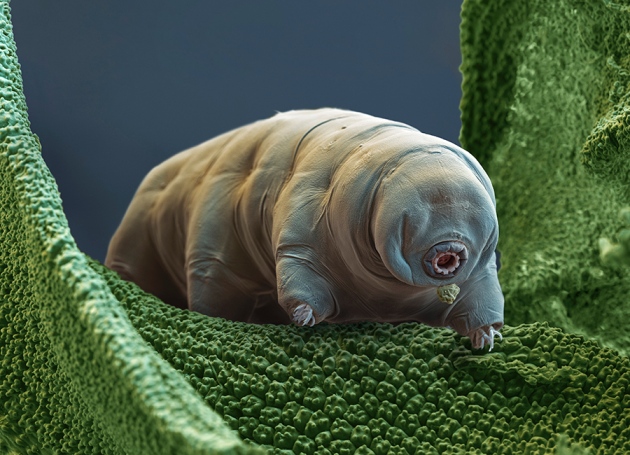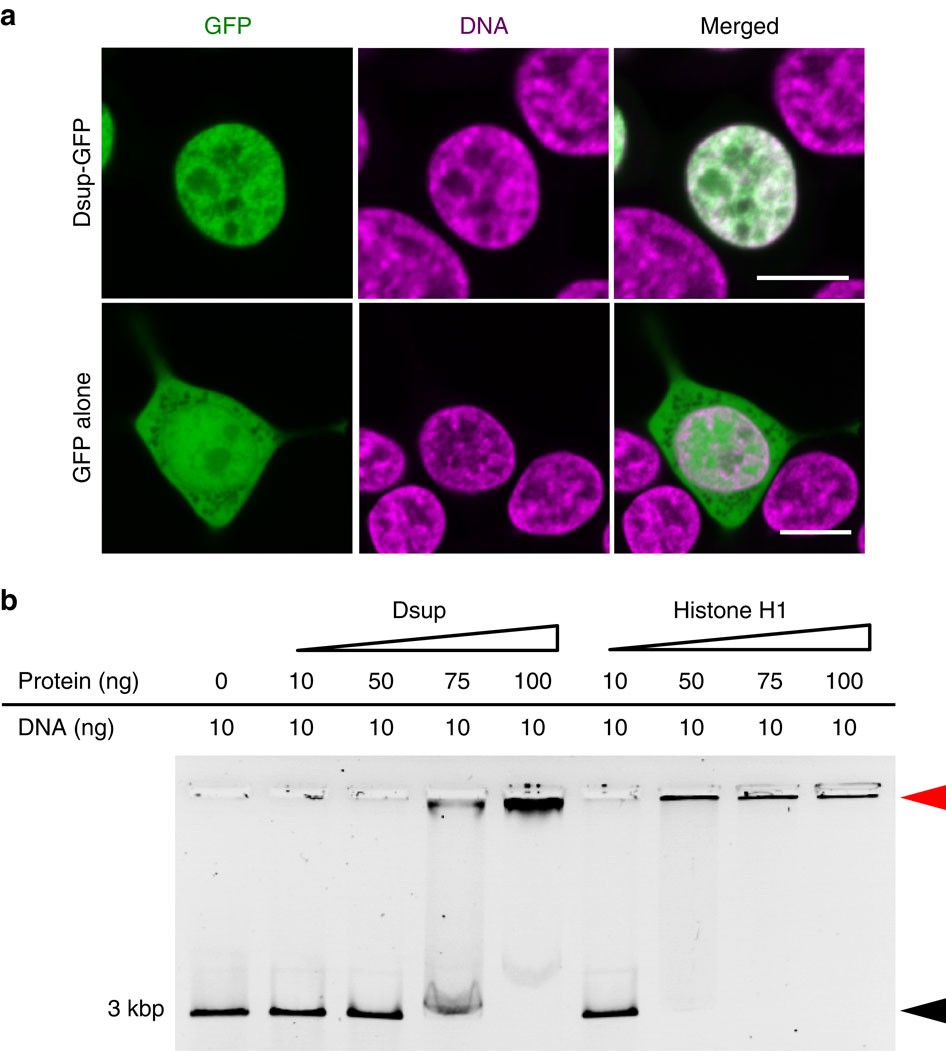Space Travel: Humanize a Tardigrade
The humble Tardigrade makes the news so often for its amazing survival on the moon, or in space, or exposure to 5,000 Gy of gamma rays. Now scientists propose to give humans the tardigrade’s radiation-resistance genes to help us survive in space. Specifically, the Dsup gene, which was shown to protect tardigrade DNA. What do you think? Would you like to travel space with a gene from a microscopic creature that looks “like a cross between a caterpillar and a naked mole rat”? (This breathless prose from the usually staid journal Nature.) Eye of Science/Science Photo Library
Eye of Science/Science Photo Library
This story reminds me of a biochemistry conference in Virginia that I attended twenty years ago with my MD/PhD student Lisa Maurer, where Frances Collins held forth in glowing terms about the Human Genome Project. At the end of the lecture, I asked a question: Would Dr. Collins favor humans acquiring cancer-resistance genes from the genome of our close relative the chimpanzee? (Chimps have stronger immune systems and resist cancer far better than we do.) Collins, however, stared in shock. His gaze swept the vast audience of chemists, as if to say, who let her in here?
Fast-forward: How far we have fallen, to contemplate acquiring radiation-resistance genes from the lowly tardigrade (sic–I just taught in intro bio that there is no such thing as a higher or lower organism). FYI, here are the data on the gene of interest, Dsup.

This figure from Takuma Hashimoto’s paper in 2016 shows that Dsup protein (green) coincides with DNA (violet) in the nucleus of human embryonic cells in tissue culture. The idea is that the Dsup protein somehow binds DNA and protects it from damage by ionizing (bond-breaking) radiation.
I’m not sure though how well this would work. I suspect that the tardigrade’s superior radiation resistance (along with dessication and starvation survival) derive from more than one “superior” gene.
Suppose instead we try the reverse: Put human genes into the tardigrade. Then suit up the humanized tardigrades as our space travelers.
This is not so far-fetched as it sounds. Consider that we now “humanize mice” all the time, by providing for instance an entire human-cell immune system or a human-derived microbiome (microbial community). We market them like commodities. “Humanized mice define Knockin models in which a mouse gene is replaced by a human gene…. Phenocopy human diseases for drug development and safety studies.”
Sure, tardigrades are small. Mice are pretty small too, small enough to feed your pet tarantula. Yet still, mice possess a remarkable portion of our intelligence, feelings and responses. Human-like cognition might yet be scaled down to microbots or even microbes, as in Brain Plague. And they might be the only sentient beings to survive the coming climate apocalypse, let alone space travel.


Comments are closed.